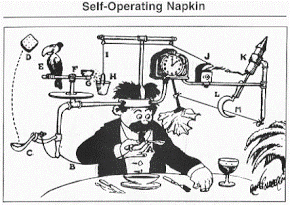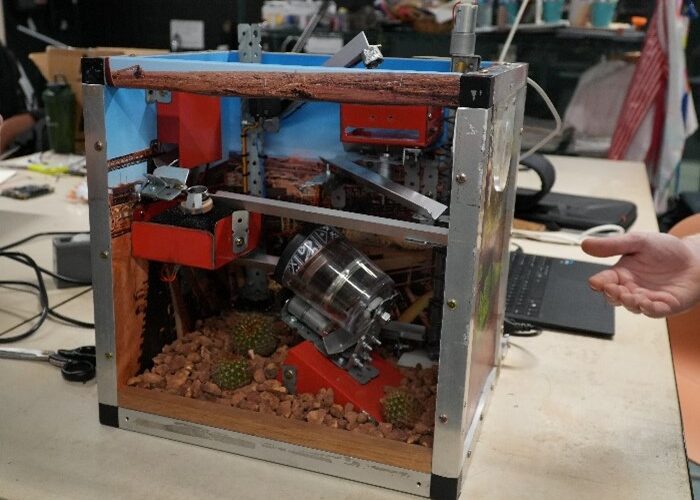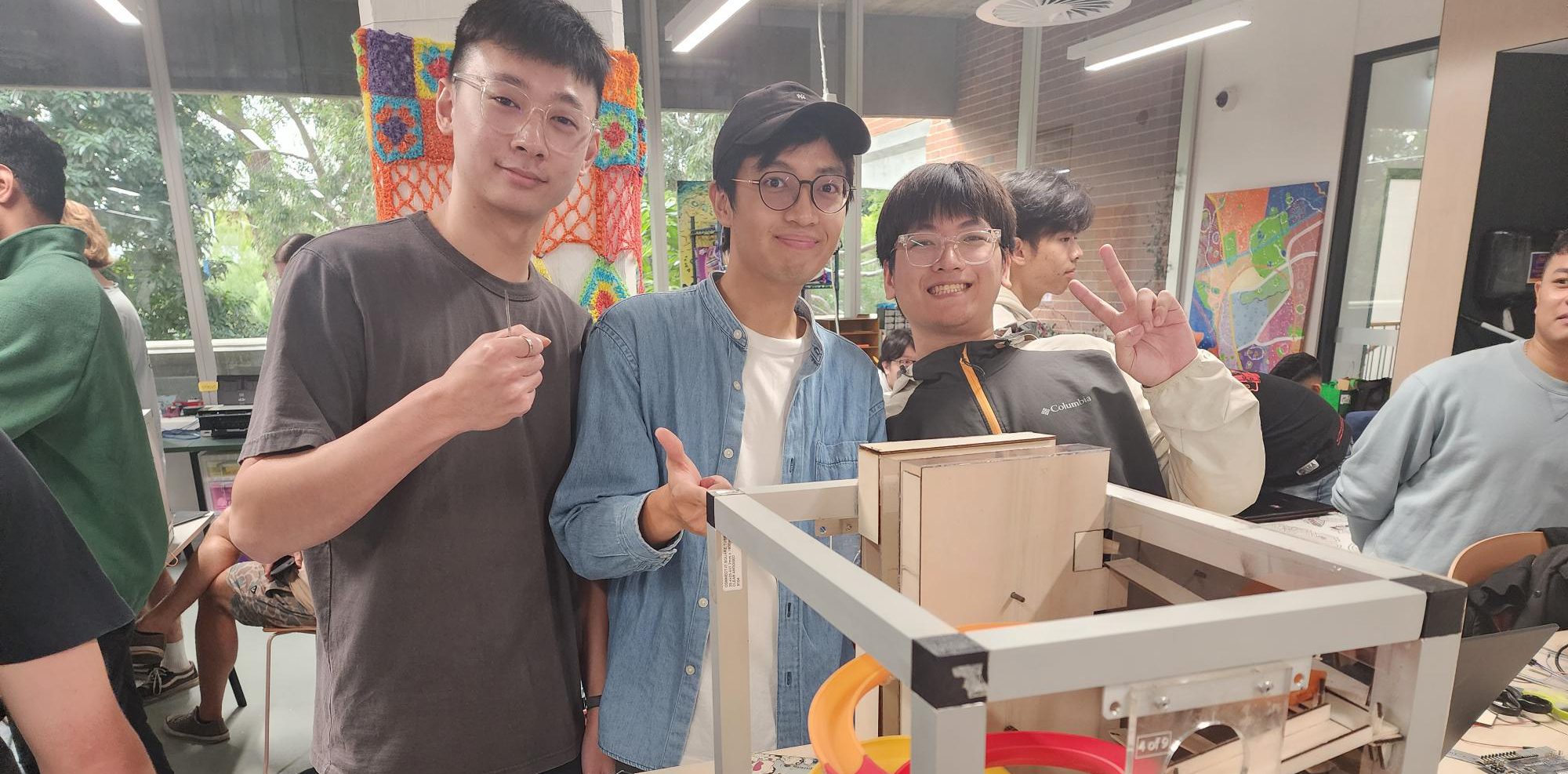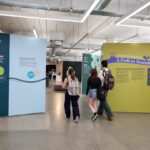Students from Curtin University’s School of Electrical Engineering, Computer and Mathematical Sciences (EECMS) were recently tasked with creating a “Crazy Machine” as part of their assessment. This Project Based Learning (PBL) approach was used in the unit Advanced Digital Design.
The premise behind the “Crazy Machine” is similar to a Rube Goldberg machine, which is designed to set off an often complicated and unnecessary chain reaction in order to achieve a relatively simple task. The name was attributed to American cartoonist Rube Goldberg, whose cartoons often depicted ridiculous contraptions; for example, the Self-Operating Napkin (pictured).

When our current students become engineers, they will be required to solve problems on a daily basis. The “Crazy Machine” assessment is an open-ended problem with no ‘right’ way of solving it, which leads to creative solutions.
Armed with identical-sized boxes, the students’ brief was to move a steel ball from entry to exit in exactly one minute. Students worked in teams to imagine, design, execute and operate their machines. Many of them worked on their assessments in the Library’s Makerspace, utilising equipment like the 3D printers and laser cutters to build elements of their project. It was a joy to see so much ‘making’ happening within the space.
After many hard and long hours of work, the teams set up their machines in the Library Makerspace for grading. Each group was assessed on timing, hardware / software / mechanical complexity, use of recycled materials, aesthetics, and more. The winning “Crazy Machine” was developed by student engineers Thomas Howlett and Angus Watson, with an impressive mining-style contraption (pictured).

Integrating project-based learning within a Makerspace is a natural fit. This hands-on environment offers students a creative space to explore, encouraging problem-solving and idea generation through their own self-directed learning.
Written by Marie Clarke, Coordinator, Library Makerspace
Enjoy reading Library news? Sign up to our newsletter!



